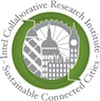First outputs from Intel research centre on sustainable connected cities

The Intel Collaborative Research Institute for Sustainable Connected Cities – a cooperation between University College London (UCL), Imperial College London and Intel – was launched in May 2012, which a focus on how to enable future cities to be more connected and sustainable. Their activities entail investigating, developing and deploying adaptive technologies that can optimize resource efficiency, and enable new services that support and enhance the quality of life of urban inhabitants and city visitors. Their approach is interdisciplinary, combining methodologies from computer science, the social sciences, interaction design and architecture to improve how cities are managed and maintained in order to ensure and enhance citizen well-being.
The Institute is directed by Duncan Wilson of Intel, assisted by Charlie Sheridan. Other people involved include David Prendergast (Intel senior researcher and anthropologist), Yvonne Rogers (UCL Professor of Interaction Design and Director of the UCL Interaction Centre), Licia Capra (UCL Reader in Pervasive computing), and Johannes Schöning (professor of computer science with a focus on HCI at Hasselt University, Belgium).
According to an initial overview article, the focus of the Institute is to be human-centred:
“Our perspective in the Sustainable Connected Cities Institute is to be human- centred. We have wide-ranging expertise and background in user experience, interaction design, ethnography, together with research in the built environment, commerce, engineering, anthropology, the arts, and social psychology. We also work as inter-disciplinary teams that can make a real change to enrich and extend city dwellers lives.” […]
We will develop and exploit pervasive and sensing technologies, analytics and new interfaces, putting humans at the centre of technological developments. Our approach is to address four main themes:
- City Experience: How do we enhance the City Experience and communicate services?
- City as a Platform: How do we create the digital platform of the city from sensor/edge to cloud?
- Sustaining Sustainability: How to sustain behavioural change?
- Connecting the Invisible City: How do we visualize the Human-Environment Interface?”
Meanwhile the Institute has published its first research papers and articles:
Toward a real-time city health monitor
A common metaphor to describe the movement of people within a city is that of blood flowing through the veins of a living organism. We often speak of the ‘pulse of the city’ when referring to flow patterns we observe. Here we extend this metaphor by hypothesising that by monitoring the flow of people through a city we can assess the city’s health, as a nurse takes a patient’s heart-rate and blood pressure during a routine health check. Using an automated fare collection dataset of journeys made on the London rail system, we build a classification model that identifies areas of high deprivation as measured by the Indices of Multiple Deprivation, and achieve a precision, sensitivity and specificity of0.805, 0.733 and 0.810, respectively. We conclude with a discussion of the potential benefits this work provides to city planning, policymaking, and citizen engagement initiatives.Smart Citizens in the Data Metropolis
Article with some insights on the discussions around smart citizens and community engagement. It was original published in the website of the Centre of Contemporary Culture of Barcelona.
Reflecting on the Institute, Mandeep Hothi, programme leader at the Young Foundation, writes:
“Much of the institute’s outputs will be relevant to local government. For example, a recent study shows a link between measures of multiple deprivation and patterns of passenger flow on public transport in London.Researchers propose that this data could become an early warning system for identifying areas of high deprivation, helping local government to better target its resources.
Data sensors such as Oyster card readers are becoming ubiquitous and the availability of real-time data is going to vastly increase.
It is important that the applications that emerge are co-created with local citizens, using ethnography and design as the starting point. Not only will this maximise usefulness, it should ensure technologists and officials respect issues such as personal privacy and autonomy.”



